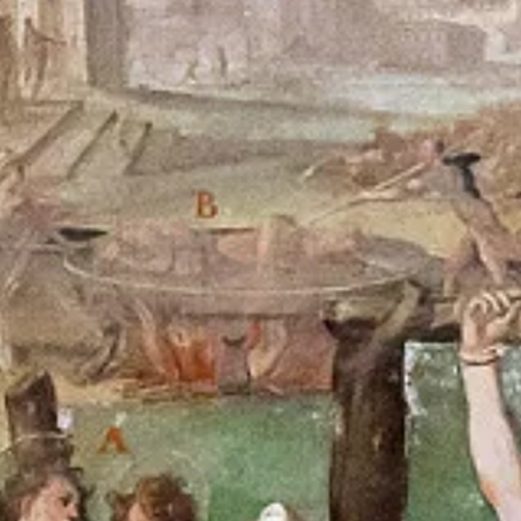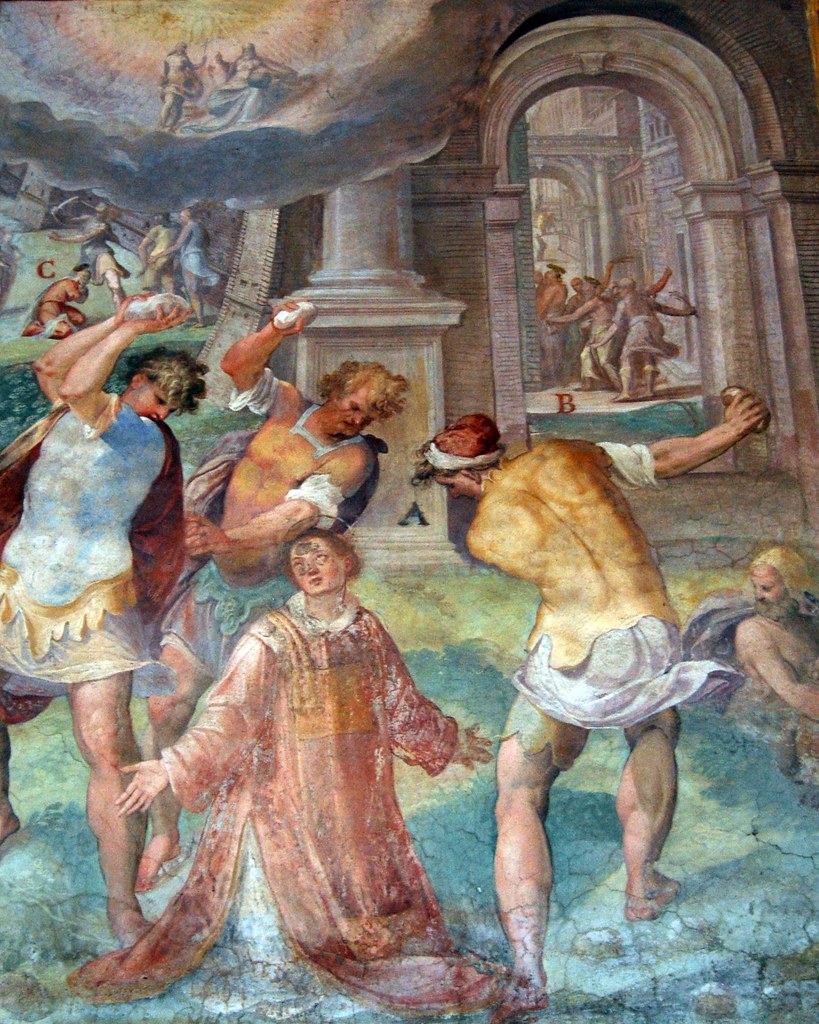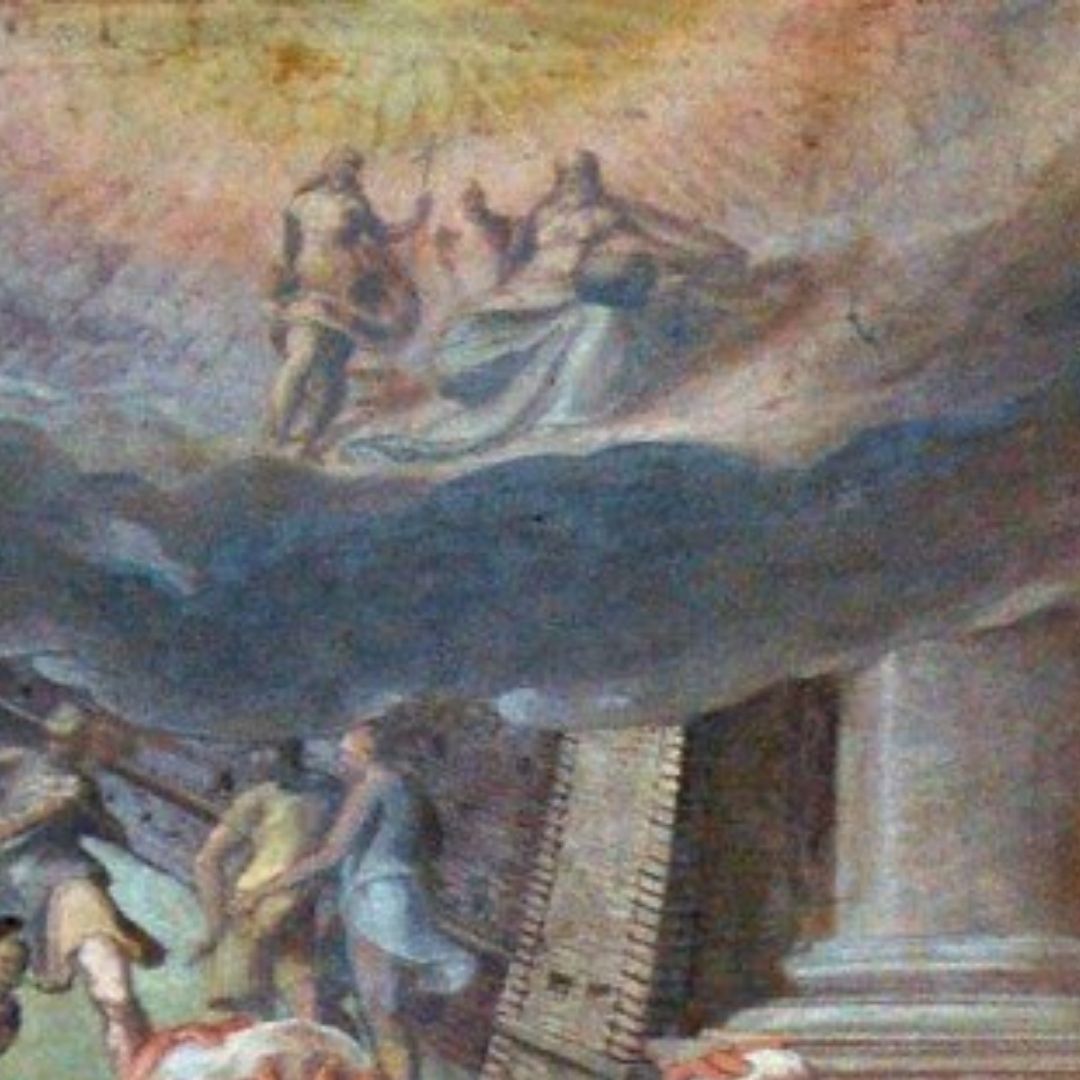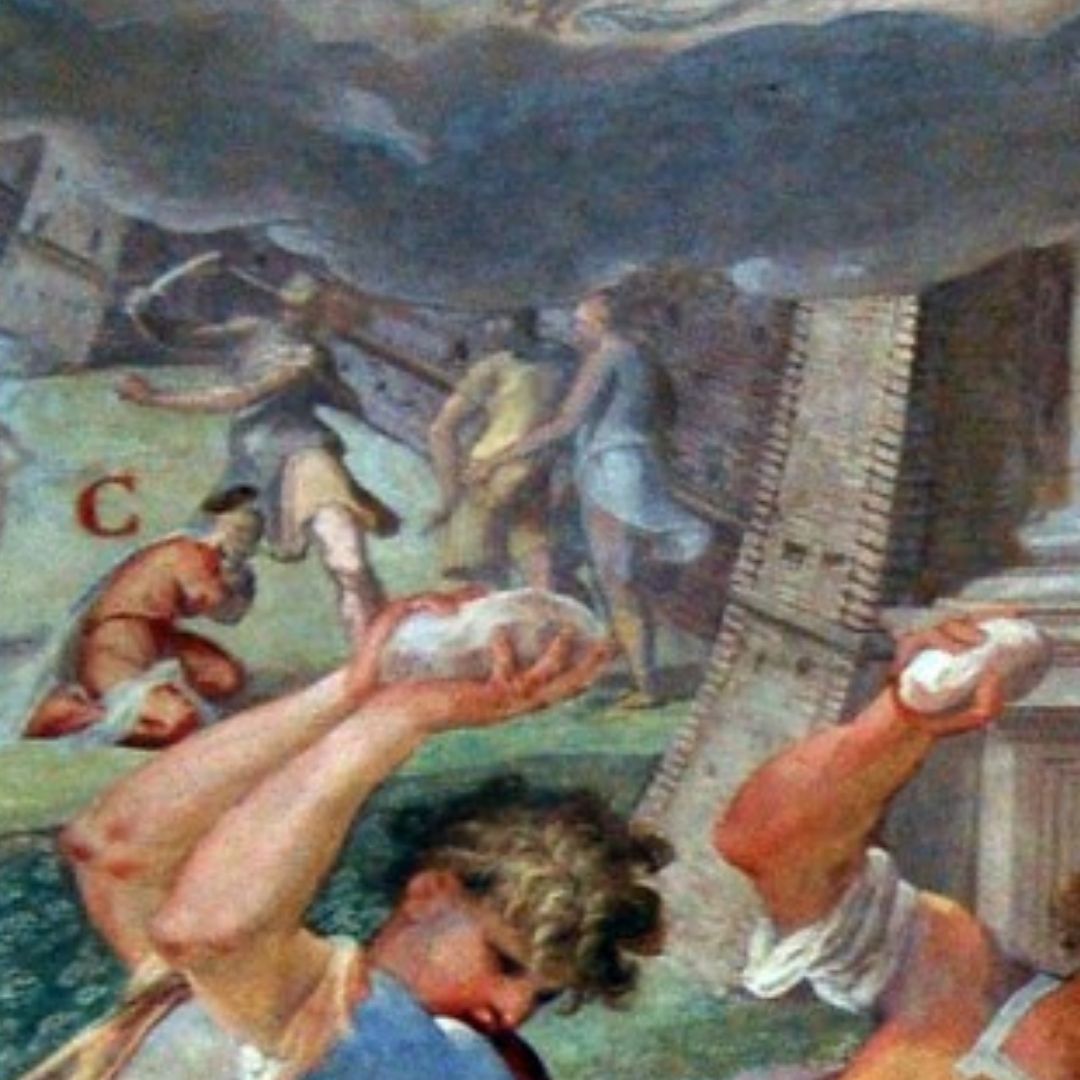This is St Margaret. Who knew? Here she is getting raked on the rack although you’d think that she was lying stretched out for a beauty treatment. Unlike, however, the naked torso of St Marius, I don’t feel that there’s much that is erotic about this. Yes, she is partially naked and yes, her hair is spread over her breasts in what could be a sensual way but the fact that she’s being pronged in the nipple by a hay fork somewhat ruins the effect.

N. Circignani and M. da Siena, The Martyrdom of Saint Margaret, Santo Stefano Rotondo, 1581-2
The man doing the pronging is rather intense, as is this man kneeling to the bottom left. Could we but see him properly in this pretty horrible reproduction of the fresco, we would see that he’s turning a wheel. The section of the wooden board beneath her armpit / upper arm is separating further with every turn. All she needs to do is worship the idol that is being held aloft for her attention but stoic St Margaret is having none of it.
Now, you might think that you are perhaps familiar with St Margaret if you take more than a passing fancy to art history.
She is most commonly seen emerging from the stomach of a dragon as in this image from a 15th century French prayer book.
The rapidity of her expulsion from the dragon is demonstrated here through the fact that it hadn’t even finished eating her robe before she burst from its stomach not only intact but bright eyed and bushy tailed. I’m not sure the dragon has noticed, however; it seems to be posing seductively with a bit of robe between its teeth!
The story of St Margaret (and even more than most saint’s stories, it really IS a story because it only appeared centuries after her death) is actually perfect for this time of year as it’s a bit of a Cinderella story…

Detail of a miniature of St Margaret emerging from the dragon, from a Book of Hours, France (Paris), c. 1440 – c. 1450, Egerton MS 2019, f. 216r

Francisco de Zurbaran, St Margaret, 1631, National Gallery, London
Young Margaret converted to Christianity as a girl and was promptly thrown out of her home by her father. She became a shepherdess but (guess what?) was so beautiful that she attracted the attention of a Roman prefect. Inevitably he was pagan and when she spurned his advances, he had her arrested for her Christian beliefs.
Poor Margaret went through a series of impossible ordeals, aided by celestial creatures and her very own fairy godmother if we keep with the Cinderella tradition. These quite possibly included torture on the rack as well as attempts to kill her by burning her and drowning her, but she survived.
Perhaps she was also ripped apart by a hay fork. Notice the rip along the centre of her torso? This would seem to me to be a nod to the dragon incident. Dragons are pretty interesting creatures and can have multiple meanings but in this instance it inevitably stands for the devil who is so repulsed by the holy personage inside him, that it has to reject her immediately.
After all this torture, St Margaret was finally beheaded as most saints were, and presumably met her Prince Charming in heaven.
It’s not surprising that this became a hugely popular tale very often depicted in works of art and almost always with a dragon.
So why is no dragon depicted here? I think because the frescoes centre on man’s inhumanity to man. There are a few with wild animals, lions etc but they were sent by Pagans to destroy Christians. Remember that the whole raison d’etre of these frescoes was to promulgate the cause of Catholics against Protestants who were killing the Catholics, and to equate the fight for Christianity in Pagan Rome to the Counter Reformation. I guess a dragon masquerading as the devil doesn’t really fit that narrative?
St Margaret by the way, for reasons that are obvious, is the patron saint of child birth.
The video of this episode can be viewed here. To view the entire ‘Elevenses with Lynne’ archive, head to the Free Art Videos page.

















Recent Comments